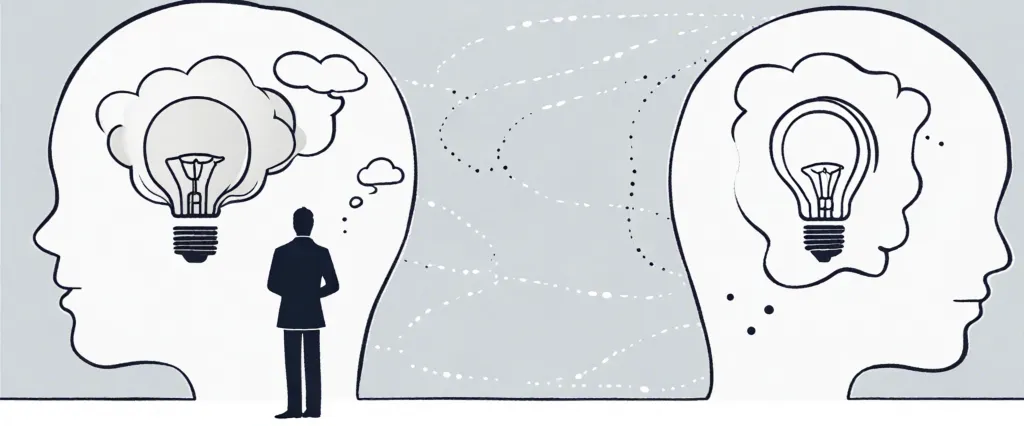The Myths of Innovation debunks the romanticized notions surrounding the process of innovation, shedding light on the realities and misconceptions that often surround it. In this illuminating book, Berkun, a seasoned author and former Microsoft employee, offers a compelling examination of innovation throughout history, challenging the widely held beliefs and myths that prevail in our society. By dissecting the true nature of innovation and exploring the forces that truly drive it, Berkun presents a refreshingly honest perspective on the subject. In doing so, he provides readers with the necessary insights to navigate the complex and unpredictable world of innovation.
Chapter 1: The Myth of Innovation
In Chapter 1 of “The Myths of Innovation” by Scott Berkun, titled “The Myth of Innovation,” the author challenges the popular perception of innovation and provides a comprehensive and thought-provoking summary of key ideas.
Berkun starts by dismantling the conventional definition of innovation as a lightning bolt of genius or a eureka moment. He argues that this myth oversimplifies the complex process of innovation, suggesting that it arises solely from rare and exceptional individuals. Instead, Berkun contends that innovation is a collaborative and gradual endeavor that involves a combination of existing ideas, experimentation, and learning from failure.
He delves into the historical evidence, highlighting how many major breakthroughs, such as the development of the telephone, lightbulb, and printing press, were not the result of a single inventing genius, but rather the culmination of incremental improvements built upon existing technology. He emphasizes the importance of recognizing that innovation is a social process, shaped by cultural, economic, and political factors.
Berkun also debunks the myth that innovation occurs in isolation, presenting examples of innovative ideas that arose from collaboration, often within organized research and development teams. He suggests that innovation requires a supportive environment, including adequate resources, peer feedback, and a culture that embraces constructive criticism.
Moreover, the author explores the fallacy of the remarkable “aha” moment, arguing that real progress stems from exploration, curiosity, and a willingness to take risks. He asserts that failure is an inherent part of the innovation process and should be embraced rather than feared.
In conclusion, Chapter 1 of “The Myths of Innovation” sets the stage for the rest of the book by debunking popular misconceptions around innovation. Berkun challenges the notion of solitary geniuses and magical moments, highlighting the collaborative and gradual nature of innovation, while emphasizing the significance of failure and embracing the iterative process.
Chapter 2: The Myth of Epiphany
Chapter 2: The Myth of Epiphany of the book “The Myths of Innovation” by Scott Berkun explores the popular belief that innovative ideas and breakthroughs originate from sudden moments of epiphany. Berkun debunks this myth by presenting a more realistic and nuanced view of how innovation actually occurs.
The chapter begins by highlighting some famous examples of supposed epiphanies, such as Isaac Newton’s observation of an apple falling from a tree, which allegedly led to his theory of gravity. Berkun argues that these stories are oversimplified and fail to recognize the hard work, prior knowledge, and incremental steps that contribute to any significant breakthrough.
Berkun explains that epiphanies are often glorified in our culture because they fit into a narrative of genius and exceptionalism. However, he asserts that innovative ideas are products of deep exploration, curiosity, and a gradual accumulation of knowledge. He stresses the importance of incremental progress, where small discoveries and failures gradually lead to new insights. Meanwhile, he points out that even when an “aha” moment occurs, it is usually built upon a foundation of prior knowledge and many hours of deliberate thinking.
To support his argument, Berkun demonstrates that many great thinkers and inventors, such as Thomas Edison, spent years experimenting, learning, and refining their ideas before achieving notable breakthroughs. He emphasizes that innovation is a messy, collaborative, and often time-consuming process, contrary to the notion of a brilliant idea suddenly striking like lightning.
In conclusion, Chapter 2 of “The Myths of Innovation” dispels the myth of epiphany by highlighting the true nature of innovation as a continuous journey of incremental progress and hard work, rather than a solitary moment of sudden brilliance.
Chapter 3: The Myth of the Lone Genius
Chapter 3 of “The Myths of Innovation” by Scott Berkun, titled “The Myth of the Lone Genius,” challenges the popular belief that innovation is the result of a solitary genius working in isolation. Berkun argues that this myth hinders our understanding of how innovation truly happens and overlooks the collaborative nature of most breakthroughs.
Berkun begins by examining some examples of famous innovators, such as Thomas Edison and Albert Einstein, who are often portrayed as lone geniuses. While these individuals contributed greatly to their respective fields, Berkun argues that their successes were deeply influenced by the network of people and ideas surrounding them. Edison, for instance, had a team of assistants and collaborators who played a crucial role in his inventions.
The author goes on to emphasize the role of collaboration in innovation by discussing “collective minds.” These are groups of people who come together to tackle a problem, each contributing their unique knowledge and expertise. Berkun cites examples like the Wright brothers, who were able to achieve flight through a combination of engineering expertise and the support of their family.
Berkun also explores the myth’s origin in cultural narratives, pointing out that stories of lone geniuses capture our imagination and promote the notion of individual exceptionalism. However, he argues that innovation is more often the result of shared efforts, combining thoughts and expertise in a collaborative manner.
In conclusion, Berkun dismantles the myth of the lone genius by highlighting the importance of collaboration and collective effort in the process of innovation. By debunking this myth, he encourages readers to recognize and appreciate the collaborative nature of innovation and the power of diverse perspectives in driving breakthroughs.
Chapter 4: The Myth of the Big Breakthrough

In Chapter 4 of “The Myths of Innovation” by Scott Berkun, titled “The Myth of the Big Breakthrough,” the author challenges the commonly held belief that innovation and breakthroughs occur in a sudden, dramatic fashion. Berkun argues that this myth perpetuates the notion that a lone genius has a sudden epiphany, leading to a revolutionary idea or invention.
Berkun starts by exploring the origins of some famous innovations, such as the light bulb and the telephone, to illustrate how these breakthroughs were, in fact, a result of incremental progress rather than a singular “eureka” moment. He emphasizes that true innovations are often the result of a slow, iterative process where individuals build upon existing knowledge and work towards small advancements in their respective fields.
The author also discusses the concept of the “Adjacent Possible,” which suggests that innovation is an extension of existing ideas, technologies, and possibilities. He explains that breakthroughs are more likely to occur when people boundary-cross and combine different fields, leading to unique perspectives and creative combinations.
Berkun highlights the role of failures and mistakes in the innovation process, emphasizing that they are crucial steps towards success. He asserts that breakthroughs often come from learning from these failures and embracing the iterative nature of innovation.
Overall, Chapter 4 challenges the romanticized notion of innovation as a sudden and solitary event, and instead presents a more realistic view. The author suggests that true innovation is a result of incremental progress, collaboration, combining existing ideas, and learning from mistakes. By discrediting the myth of the big breakthrough, Berkun encourages readers to embrace a more nuanced understanding of the innovation process.
Chapter 5: The Myth of the Perfect Plan
Chapter 5 of “The Myths of Innovation” by Scott Berkun, titled “The Myth of the Perfect Plan,” challenges the commonly held belief that successful innovations are the result of meticulous planning and flawless execution. Berkun argues that this notion is a myth and explores various reasons why a perfect plan rarely exists in the realm of innovation.
Berkun begins by emphasizing the unpredictable nature of innovation and how it often involves exploring uncharted territory. He explains that plans are based on assumptions, but when venturing into the unknown, these assumptions may prove incorrect, rendering the plan imperfect. He provides examples of successful innovations like the iPhone and Twitter, which were the result of iterative development rather than adherence to a predefined plan.
The author also delves into the misconception that experts possess all the answers. He argues that expertise can create a false sense of control, leading to rigid planning that hampers innovation. Berkun suggests that embracing uncertainty and being open to experimentation are more conducive to innovative breakthroughs.
Berkun further critiques the common belief that failures in implementation imply a flawed plan. He contends that innovation inherently involves trial and error, with success often emerging from adaptive strategies rather than rigid execution. He cites historical examples such as the Wright brothers’ iterative testing leading to the invention of the airplane.
In conclusion, Berkun challenges the notion of a perfect plan by highlighting the unpredictable nature of innovation and the importance of embracing uncertainty and experimentation. The chapter encourages readers to question the myth of the perfect plan, thereby enabling a more flexible and adaptive approach to innovation.
Chapter 6: The Myth of Unlimited Resources
Chapter 6: The Myth of Unlimited Resources from the book The Myths of Innovation by Scott Berkun explores the common belief that innovation requires unlimited resources. Berkun challenges this notion, arguing that limitations often fuel creativity and drive innovation.
The chapter begins by examining the relationship between scarcity and innovation. Berkun explains that limitations force individuals and teams to make tough decisions and prioritize their efforts. When faced with scarcity, people are forced to think more creatively and find innovative solutions to maximize the available resources. In contrast, having abundant resources can lead to complacency and a lack of motivation to seek out alternative approaches.
Furthermore, Berkun explores the concept of efficiency versus effectiveness. He suggests that having limited resources can actually lead to more effective outcomes because it forces individuals to focus on the most important aspects and weed out unnecessary elements. In contrast, having unlimited resources can lull people into a false sense of security that their ideas or projects are progressing well, without truly evaluating their effectiveness.
The chapter also discusses how constraints can inspire creativity. Limitations can serve as a catalyst for finding new approaches and thinking outside the box. Berkun provides numerous historical examples, such as the constrained spaces in submarines and airplanes that led to significant innovations.
Berkun concludes the chapter by reminding readers that limitations are a fundamental part of life and work. Rather than viewing them as obstacles, individuals should embrace limitations as opportunities for creative problem-solving and innovation. While it may be tempting to wish for unlimited resources, it is often these very limitations that drive some of the most groundbreaking innovations.
Chapter 7: The Myth of Smooth Progress
Chapter 7 of “The Myths of Innovation” by Scott Berkun is titled “The Myth of Smooth Progress.” In this chapter, Berkun explores the common misconception that innovation is a process that always moves forward smoothly, without any setbacks or challenges.
Berkun starts by highlighting the belief that great ideas are the products of individual geniuses suddenly having a breakthrough moment. However, he argues that this misconception can be damaging, as it undermines the reality that innovation is often a messy and non-linear process. Throughout history, many great ideas faced rejection and skepticism before eventually being accepted and recognized as innovative.
The chapter also discusses how innovation is subject to political, cultural, and economic factors, which can influence and impede progress. Berkun provides examples such as how economic downturns, management conflicts, and bureaucracy can hinder innovative projects. He emphasizes that dealing with these obstacles requires resilience, adaptability, and a willingness to learn from failures.
Another crucial point made in the chapter is that innovation often involves trial and error. Many successful innovations arose from a series of failed attempts and iterations. Berkun encourages readers to embrace failure as an integral part of the innovation process.
Furthermore, the chapter highlights the importance of collaboration and teamwork in driving innovation. Berkun emphasizes that successful innovations are rarely the work of a lone genius but rather the result of collective efforts, knowledge sharing, and diverse perspectives.
In summary, Chapter 7 of “The Myths of Innovation” debunks the notion of smooth progress in the innovation process. It demonstrates that obstacles, failures, and challenges are all integral parts of the journey towards innovation. By understanding and acknowledging this, individuals and organizations can foster a more realistic and effective approach to innovation.

Chapter 8: The Myth of Instant Success
Chapter 8 of “The Myths of Innovation” by Scott Berkun is titled “The Myth of Instant Success.” In this chapter, Berkun challenges the popular belief that successful innovations happen overnight or through a stroke of genius. He argues that this myth distorts our understanding of the innovation process and discourages individuals from pursuing their own ideas.
Berkun begins by highlighting the historical examples of successful inventions and innovations, such as the light bulb or the theory of relativity. Contrary to the myth, he stresses that these achievements were not instantaneous but rather the product of years of trial and error, multiple iterations, and a long journey of learning and refinement. He emphasizes the importance of taking risks, learning from failures, and having the determination to persist through challenges.
The author also points out that the myth of instant success misleads individuals by making them believe that innovation is only for the exceptionally gifted or lucky few. This perception can discourage people from exploring their own ideas, underestimating the time and effort required to bring them to fruition. Berkun makes a case for the value of perseverance, iteration, and dedication as essential elements of the innovation process.
Ultimately, Berkun aims to demystify the idea of instant success and highlight the reality that innovation is a messy, complex, and time-consuming process. By challenging the myth, he hopes to inspire readers to persevere in their own quests for innovation, reminding them that success often comes after a long and arduous journey.
After Reading
In conclusion, “The Myths of Innovation” by Scott Berkun provides valuable insights into the true nature of innovation and debunks common misconceptions surrounding it. Through engaging anecdotes and meticulous research, Berkun demonstrates that innovation is not a sudden flash of genius, but rather a complex and iterative process. Furthermore, he emphasizes the importance of creativity, collaboration, and persistence in the pursuit of innovative ideas. By dispelling myths such as the lone genius and the Eureka moment, Berkun encourages readers to challenge traditional thinking and embrace the messy and often unpredictable nature of innovation. This book serves as a thought-provoking guide for aspiring innovators, debunking myths that hinder progress and offering practical advice to cultivate a thriving culture of innovation.
1. Creativity, Inc.: Overcoming the Unseen Forces That Stand in the Way of True Inspiration” by Ed Catmull and Amy Wallace
– This book offers a fascinating and honest insight into the creative process and the challenges faced by individuals and organizations in achieving true innovation.
2. “The Innovator’s Dilemma: When New Technologies Cause Great Firms to Fail” by Clayton M. Christensen
– This book explores the concept of disruptive innovation, discussing how established companies often struggle to adapt to new technologies and the potential pitfalls they face.
3. Thinking, Fast and Slow” by Daniel Kahneman
– This renowned book delves into the two systems of thinking that affect decision-making and creative problem-solving. It explores biases and cognitive processes that can hinder or inspire innovation.
4. Originals: How Non-Conformists Move the World” by Adam Grant
– Offering a fresh perspective, this book delves into the characteristics and habits of original thinkers and pioneers, challenging conventional wisdom and inspiring readers to embrace their own unique ideas.
5. The Lean Startup: How Today’s Entrepreneurs Use Continuous Innovation to Create Radically Successful Businesses” by Eric Ries
– This book provides valuable insights into the world of entrepreneurship and the lean startup methodology, emphasizing the importance of testing ideas, iterating, and constantly learning from failures as a path to successful innovation.




